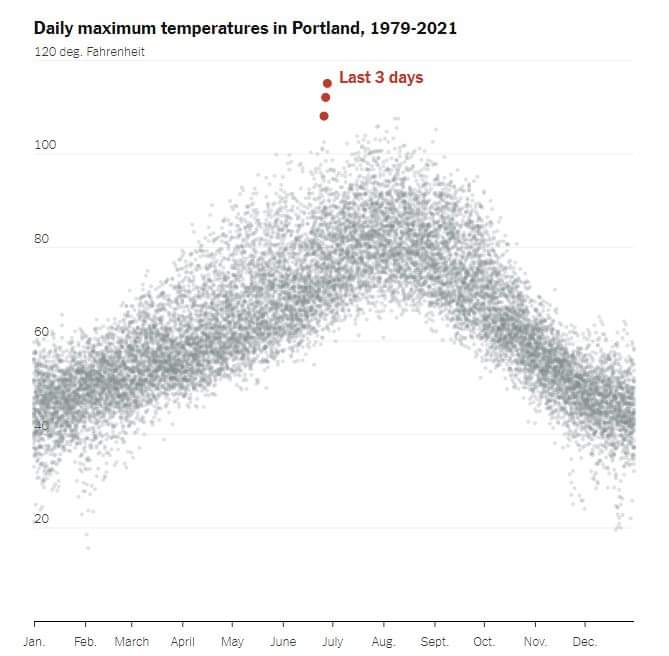And the wind began to howl

I hope this Twitter thread is exaggerating, at least a little:
Last week I was in a thread where someone wondered about heat, human survivability/habitability, and climate change. I’ve done some technical work on this specific question, so, quick thread on basics, and what to worry about.
Key term to know: The “wet bulb” temperature. “Wet bulb” temperature is the temperature + relative humidity at which water stops evaporating off a “wet” thermometer bulb. If air is sufficiently humid (saturated w/ water vapor), evaporation will no longer cool the bulb, and it gets continuously hotter. This matters for humans, because our bodies regulate heat via evaporation: sweat glands carry heat from body to the skin surface, where it evaporates, dissipating heat into the air. As long as you stay hydrated (and take salts! salt is important), you can stay cool at high temps However, key interaction here is evaporation, which is controlled in part by a) amount of energy in the sweat (how much heat it is carrying) and b) how much moisture is already in the air. E.g., when people tell you “it’s a dry heat” as if it’s “more tolerable,” they are correct. Dry air has essentially infinite capacity to absorb moisture, so, humans can survive in very high temps if the air is dry – though when you get up into the high 120’s and above, you’ll start seeing hyperthermia death among children, the elderly, and infirm.
But, the wet bulb. Wet bulb takes a minute to grok because it’s not about *heat,* per se. It’s about the absorptive capacity of air. A wet bulb temperature in the mid-80s F can, and does, kill humans. Heat waves in the EU & Russia in 2003 and 2010 killed over a hundred thousand people at ~ 82 F. Reason: While body temp is ~ 97-99 F, we maintain temp by sweating. If sweat won’t evaporate, our body temp rises, continuously. And when body temp hits ~108, we’re dead.
For a vulnerable person in wet bulb temp, this takes much less than an hour. Naked. In the shade. (Side note: Weather forecasters should announce the wet bulb temperature or Human Heat Index as a matter of public service)
So, what does this have to do with you? Well, up until last ~ 40 years, wet bulb temperatures were *extremely rare* on this planet. But that’s over, now. We’re already seeing multiple wet bulb temperatures per year in multiple locations. By mid-century, parts of the Southeastern U.S will see *weeks* of wet bulbs *every year.*
This is quite bad. Thousands of people will die on each of those days. This has … implications. Human habitations get very difficult to manage when thousands and thousands of people are dying every day, for weeks, every year.
This is actually an active area of climate science and resilience study: research.noaa.gov/article/ArtMID…So, the moral of the story: Many of the places humans currently live on the planet are on their way to being functionally uninhabitable by humans. They will have to move. Some may try to “adapt,” and some may pull it off. But this will be exceptionally difficult. If we do everything right, starting now, there’s a chance we could return some of those places to habitability for future generations, in the 3rd millenium or so. But as of today, we’ve already roasted most of them. Carbon emissions have a very long life in the atmosphere. So please, help your city prepare for the refugees. Depose the NIMBYs in your city government. Defeat the car-stans who deny that all of this is happening.
Because the heat is coming. It’s already here.


